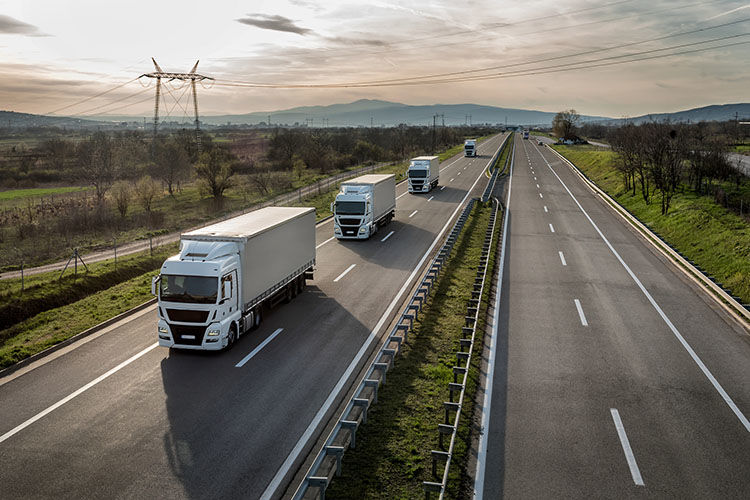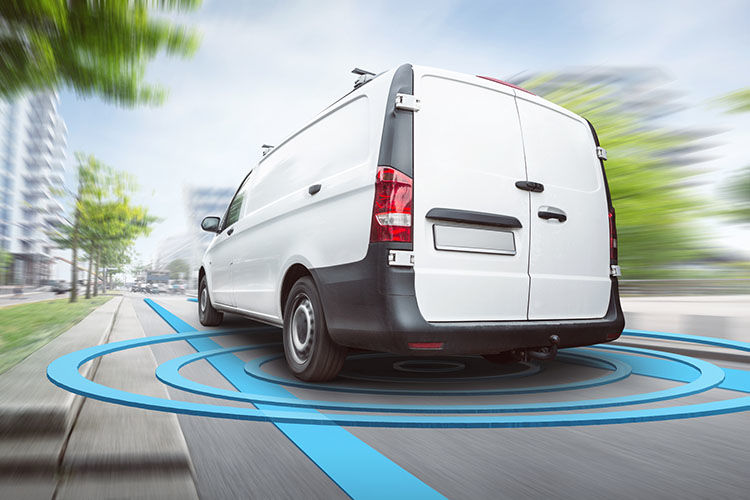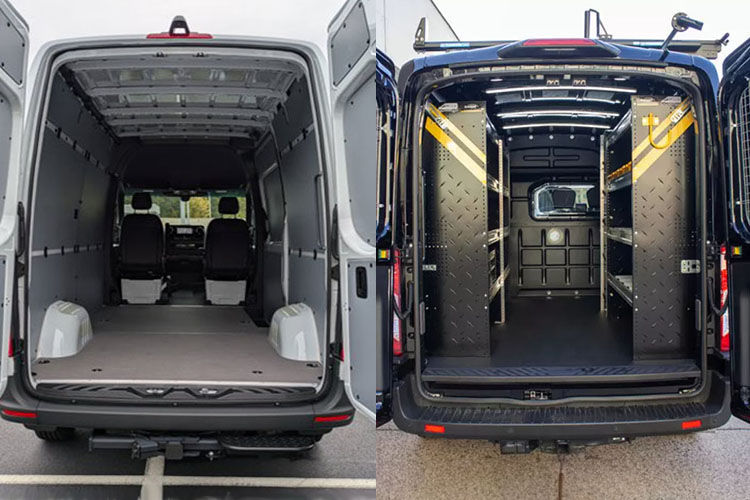A Delivery Driver Compares his GMC LCF and Ford Transit


A Delivery Driver Compares his GMC LCF and Ford Transit
We interview Mike from Creative Composition about his GMC Low Cab Forward Truck and how it compares to their Ford Transit for delivering print cargo.
- The GMC LCF holds multiple pallets and handles more weight than a Ford Transit.
- The Ford Transit works great for smaller deliveries, but doesn’t have the power for heavier loads.
- The bumper of the GMC truck can make it difficult to handle forklift loading and unloading.
- The choice of flooring material in the GMC LCF has pros and cons, like a metal floor makes it easier to move pallets.
Q: What do you like most about your GMC Low Cab Forward you use for delivery? It has a freight body made by General.
A: What I like most about our vehicle is the capability of having multiple pallets in there versus some of our other vehicles that we've had in the past where you can't accommodate much. We can get up to eight pallets inside here. Our other one was only five pallets. So we can get a little bit more pallets. We've got a little bit more height room in there, so we got a little bit more capacity to get bigger stuff in there. It also can hold a lot more weight as well versus our other vehicles that we've had that are lower-weight capacity vehicles as well.
Q: What’s the size of your typical delivery?
A: Typically, our loads range anywhere from roughly 1,000 pounds up to close to 10,000 because we're not a Class A driver. We don't have the Class A driver's license, so we have to keep it below that.
Q: What’s something you don’t like about your truck?
A: What I don't like about this vehicle is the fact that getting parts for it is very difficult. We're actually working on that right now with our locks on the vehicle. The locks on the vehicle, as you can see, they are broken. We've tried four different people to try to get it. Even the actual GMC dealer, we can't even get it from the GMC dealer. It's one of those tough locks to try to find. You actually have to go back to the make of it — which is Isuzu, instead of GMC, even though it's a GMC vehicle — and they have to make the locks.
The other thing that I don't really care for is the gas mileage on it. We're only getting about 8 or 9 miles to the gallon, but it does get the job done.
It does have the capability of having the higher backend and the drop-down, so if you have a dolly or whatever you can go right up versus the other vehicles where we actually had to use a forklift or lift it up in there manually.
Q: What’s the comparison between your older Chevy and newer GMC delivery trucks.
A: The Chevy is a 1990, and it's an old bread van. That’s what they called it. But the difference between the two vehicles is the GMC can hold a lot more weight. It's definitely a lot more road-safe than the other one. The other one is really rickety. As you're driving down the road, it clacks a lot and just makes a bunch of noise. We ended up putting 300,000 miles on our old bread van and it's still running. That's what we're planning on doing with this until we trade it in. With this new truck, all the load is separated from the cab to where you don't hear everything bouncing around.
Q: How's the turning radius of the low cab forward in urban areas?
A: The low cab does have a lot better turning radius on it. We are able to get in and out of tighter spots versus the bread van back there, which you're taking a big wide turn, almost like a semi-truck type of turn.
Q: What questions do you ask dealers when building out your fleet of delivery trucks?
A: When we go to the dealer and we want to trade it in and look for a new vehicle, that's what we're looking at: “What can it hold?” and “Can it do what we need it to do?” The gas mileage is a big thing for us because we're constantly going back and forth and dealing with stuff like that. When we take the truck in to have it serviced, it's like, “Well, it's getting a little bit old. Do you want to trade it in?” “Well, no, not yet.” As long as it still runs and we have no issues with it, then we'll keep it going.
Q: Tell us about your delivery van.
A: We have a little 2010 Ford Transit. That one we bought brand-new in 2010. We have roughly 280,000 miles on that now and that's our van that we use for everything. We are looking at trading that in eventually because it does have a lot of mileage on it, but it's also not able to hold the load that we want. It doesn't have a get-up and go. When we're trying to get onto the freeway, it's like I could almost walk faster than they can get up and go!
Q: How do you load up the box trucks?
A: To load this thing up, we mainly use our forklift to load everything. The only downside to it is the bumper. It does stick out a little bit further than I'd like. When we bring the forklift in, obviously, we can't bring the pallet all the way to the edge. We have to scoot it in and then bring the forklift out, and then lift it and push it back in a little bit further. If they would have cut the bumper a little bit shorter and put the guards kind of like they do on the semi-trucks with the little bumpers, that would have been ideal.
The only other downside is our Chevy vehicle has a nice, slick, metal flooring so the pallets slide easy. Versus this GMC with the General body, where they don't slide. Which is a good thing that they don't slide because as we're going down the freeway, you don't have to worry about the slot moving in and around. It’s nice because, like I said, it doesn't slide. But I'd rather have the metal where we can hand pull it if we need to and we can always put the tough locks in to stop the pallets from sliding around. It makes it nice because you got the little ramp right here, so we can just pull it right out hook it up to the top and away you go. Just load yourself up and it makes it nice and easy.
Q: If you could change anything on this truck, what would it be?
A: Honestly, if I could change anything at all, it would be the whole electrical itself on it is a pain. Because we were actually going to hook up a trailer to this, but to be able to do that, there's no plugin down here. They actually had to cut out a section for it and put one aftermarket in, which kind of doesn't make sense. You would think most trucks would have it in case you wanted to do that. I mean, it's got the trailer hitch, but it doesn't have a spot for the socket. Those would be the main things that I'd like to see changed.
 Best Gifts for Truck Drivers and Truck Owners (2025 Guide)
Best Gifts for Truck Drivers and Truck Owners (2025 Guide) Trump's 25% Trucking Tariffs: The Devil is in the Details
Trump's 25% Trucking Tariffs: The Devil is in the Details What Commercial Fleets Need to Know About ADAS Before Their Next Vehicle Purchase
What Commercial Fleets Need to Know About ADAS Before Their Next Vehicle Purchase How Efficient Upfit Planning Amplifies the ROI of Your Commercial Vehicle Upfit
How Efficient Upfit Planning Amplifies the ROI of Your Commercial Vehicle Upfit Protecting Your Business with the Right Commercial Auto Insurance
Protecting Your Business with the Right Commercial Auto Insurance







